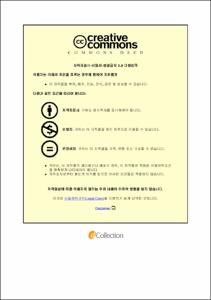3차원-패터닝 스마트 수화젤의 생체내 골재생 및 혈관신생능 평가
- Abstract
- 연구 배경
임상에서 구강악안면영역의 크고 복잡한 뼈 결손부위를 치료하는 것은 매우 어려운 문제이다. 조직공학분야에서는 생체 재료 단독 혹은 생체 재료와 적절한 생물학적, 화학적 요인들을 결합하여 뼈 조직을 회복시키는데 사용하고 있다. 세포와 성장인자의 전달체로서, 이전 연구에서 Matrix metalloproteinase (MMP) sensitive acrylated hyaluronic acid (HA) 기반의 스마트 수화젤을 소개하였다. 이번 연구에서는 이 스마트 수화젤을 3D 바이오 프린팅 기술과 결합하여, 임상상황에서의 다양한 골 결손 부위에 적용 가능한 지지체를 제작하였다. Substance P (SP) 와 Bone Morphogenic Protein-2 (BMP-2) 를 각각 포함하는 다른 종류의 스마트수화젤을 3D 프린팅을 위한 바이오잉크로 사용하였다.
연구 방법
SD쥐의 등 좌, 우측 두 곳에 절개를 가하여 피하조직에 포켓을 만들어주었다. 이번 연구에서 제작한 지지체를 쥐 등의 좌측 포켓에 이식하고, 우측 포켓은 음성대조군으로 설정하여 아무것도 이식하지 않았다. 수술 1달 뒤 이식한 부위의 표본을 채취하였다. 외부 직경이 6 mm 인 트레핀 버를 사용하여 전두골과 두정골 사이 가운데 전층골결손을 생성하였다. 결손 부위에 실험 계획에 따라 스마트 수화젤로 제작한 지지체를 이식한 군과 그렇지 않은 군으로 나누어 비교 평가 하였다.
연구 결과
SP 패터닝 스마트수화젤 그룹의 이식한 부위에서 명확한 혈관신생이 관찰되었다. 대조군에 비해 피하조직이 두꺼운 양상을 보였고, 양성대조군으로 설정한 어떤 성장인자도 패터닝되지 않은 수화젤을 이식한 그룹과 비교했을때 더 큰 혈관이 침투한 것과 더 많은 수의 혈관이 신생 된 것을 조직학적으로 확인하였다. 두개골결손 모델에서, SP와 BMP-2 패터닝 스마트 수화젤 그룹의 이식한 부위에서도 대조군에 비해 더 많은 골 생성이 일어나 골결손 부위의 크기가 훨씬 작아진 것을 확인할 수 있었다. 결과 중 어떤 그룹에서도 염증 반응은 관찰되지 않았다.
결론
이번 연구에서는 바이오 프린팅에 사용될 바이오 잉크로서, 1가지 이상의 다른 종류의 스마트 수화젤을 사용하여 지지체를 제작하였다. 이 스마트 수화젤로 제작한 지지체는 연구자가 원하는 성장인자를 선택적으로 지지체에 포함시킬 수 있는 장점이 있다. 게다가 이 지지체는 1가지 이상의 성장 인자를 포함할 수 있기 때문에, 성장을 촉진시킬 수 있는 다른 종류의 기전을 동시에 성공적으로 촉진시킬 수 있음을 증명하였다. |Introduction
To treat large and complex bone defects of maxillofacial area is challenging situation in clinic. In bone-tissue engineering, biomaterials alone or in combination with suitable biological and chemical factors are used to restore the bone tissue. As a carrier of cells and growth factors, we introduced matrix metalloproteinase (MMP) sensitive acrylated hyaluronic acid (HA)-based smart hydrogel system(SHS) in previous study. In this study, we combined this SHS into 3D bioprinting technique to fabricate scaffold that can be used at various bone defect in clinical situation. And we adapted different kinds of smart hydrogel containing substance P (SP) peptide or/and bone morphogenic proten-2 (BMP-2) as a bio-inks for 3D bioprinting. Overall objective of this study is to develop the customized scaffolds which can be clinically applicable.
Materials and Methods
Subcutaneous pockets were made to the right and left of two incisions on their backs. The experimental 3D patterned smart hydrogels were implanted into the dorsal skin of each rat to the left side, and right side was set as a negative control group that nothing was grafted except pocket making. The implanted site’s specimens were harvested a month after the surgery.
A full-thickness bone defect was created between frontal bone and parietal bone, using a hallow trephine bur with a 6 mm outer diameter. The defect area was either left empty, or was filled with experimental 3D patterned smart hydrogel. The animals were sacrificed 4 weeks later under a CO2 chamber.
Results
In the smart hydrogel with SP peptide patterning group, there was a clear angiogenesis in the pocket area. Subcutaneous tissue was rather thicker than the control group. Also, much bigger vessels were infiltrated and the number of vessels was observed more than that in the only HA hydrogel group. It was clear that the smart hydrogel with SP and BMP-2 patterning group showed more bone formation than the positive control group, resulting in much smaller size of bone defect. And histologic evaluation confirmed this result. An inflammatory response was not observed around the scaffolds in any group.
Conclusion
In this study, we fabricated scaffolds using different types of smart hydrogel as a bio-ink for 3D bioprinting. This smart hydrogel scaffold can contain chemical cue that promotes angiogenesis or new bone formation. In addition, scaffold can contain more than one type of chemical cue so that different pathways of growth promotion can occur simultaneously at the graft site successfully.
- Issued Date
- 2018
- Awarded Date
- 2019-02
- Type
- Dissertation
- Alternative Author(s)
- Yong-Jae, Joung
- Affiliation
- 울산대학교
- Department
- 일반대학원 의학과
- Advisor
- 이부규
- Degree
- Master
- Publisher
- 울산대학교 일반대학원 의학과
- Language
- eng
- Rights
- 울산대학교 논문은 저작권에 의해 보호받습니다.
- Appears in Collections:
- Medicine > 1. Theses (Master)
- 파일 목록
-
-
Download
 200000177314.pdf
기타 데이터 / 1.26 MB / Adobe PDF
200000177314.pdf
기타 데이터 / 1.26 MB / Adobe PDF
-
Items in Repository are protected by copyright, with all rights reserved, unless otherwise indicated.